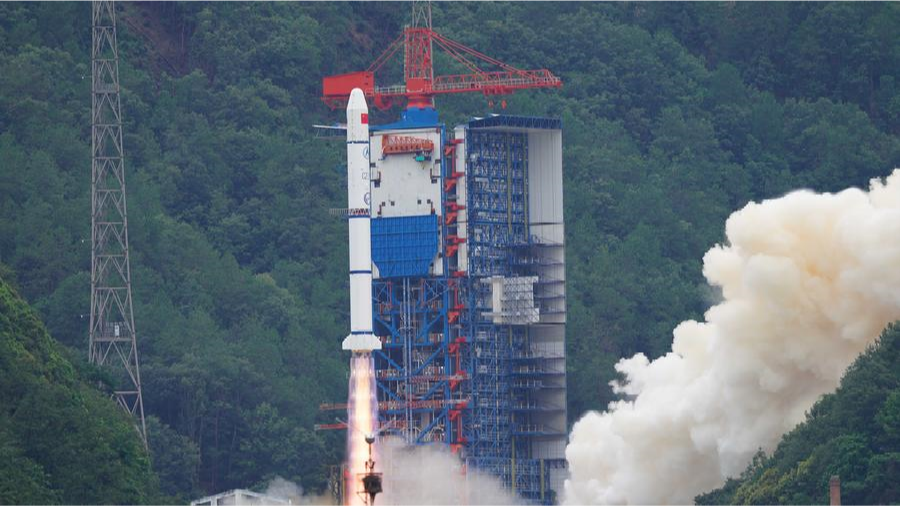
 0 Comment(s)
0 Comment(s) Print
Print E-mail Xinhua, July 9, 2024
E-mail Xinhua, July 9, 2024
A Long March-2C rocket carrying an astronomical satellite, the Space-based Multi-band Variable Object Monitor (SVOM), blasts off from the Xichang Satellite Launch Center in southwest China's Sichuan Province on June 22, 2024. [Photo/Xinhua]
An astronomical satellite jointly developed by China and France has recently detected gamma-ray bursts since its launch two weeks ago, marking a promising start to this high-level cooperation project between the two countries.
After in-orbit tests, the satellite platform is functioning normally and the satellite has established real-time connections with over 40 ground communication stations. All four payloads have successfully completed their power-on tests, the Chinese Academy of Sciences (CAS) said on Monday.
The satellite, the Space-based Multi-band Variable Object Monitor (SVOM), was launched on June 22. Mounted with four scientific payloads developed by Chinese and French scientists, it is currently the world's most capable satellite for multi-wavelength, integrated observations of gamma-ray bursts.
Among the four payloads, the gamma-ray monitor developed by the Institute of High Energy Physics of the CAS began in-orbit tests on June 27 and successfully captured the first gamma-ray burst, coded GRB 240627B, on the same day. This marks the first in-orbit detection result of the SVOM satellite.
The monitor also detected two additional gamma-ray bursts on June 29 and July 2, respectively. The results of the three gamma-ray bursts have been sent to the General Coordinates Network, an international collaboration platform for astronomy research. The CAS said that it has verified the monitor's high-precision detection capability for gamma-ray bursts.
The SVOM satellite will complete various tests by a satellite operation and control center under the CAS, with the scientific observation tests expected to start in August.
Gamma-ray bursts, usually very short in duration, are the most violent explosive phenomena in the universe after the Big Bang, and they occur during the collapse of massive stars or the merging of binary compact stars. In-depth observation and research of gamma-ray bursts will help mankind understand some of the fundamental questions of science, according to Wei Jianyan, SVOM's Chinese principal investigator.
The main scientific objectives of SVOM include searching for and rapidly locating various gamma-ray bursts, comprehensively measuring and studying their electromagnetic radiation properties, investigating dark energy and the evolution of the universe through these bursts, and observing electromagnetic signals associated with gravitational waves, Wei added.